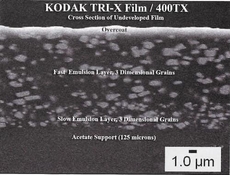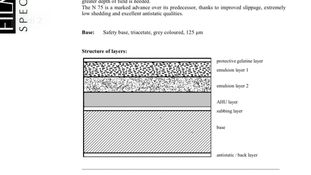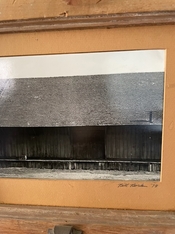Bill Burk
Subscriber
- Joined
- Feb 9, 2010
- Messages
- 9,428
- Format
- 4x5 Format
I am chatting on a Facebook group with someone who wants a replacement for Plus-X in 35mm, 120 and 8x10
It’s a two-emulsion film she’s looking for. And I hate to admit I didn’t know what she was talking about until she showed some pictures that illustrate… sure enough there’s two layers…
To quote @DREW WILEY from a recent thread…
—
No thick-emulsion, very long straight line film equivalent to Super-XX now exists. Bergger 200 was the last semi-equivalent. The present Foma/Arista pseudo-200 has a long straight line, but none of the other desirable characteristics. TMax 400 is a reasonable substitute, but not the same thing either. FP4 won't handle anywhere near the same luminance range as the true 200's, though it's an excellent film in its own right.
—
So I looked around and found there isn’t a thread about two emulsion films and thought it would be a good question to pose.
What films are, or were in this class. What made them special. What substitutes exist.
And should I buy Plus-X now while I can?
It’s a two-emulsion film she’s looking for. And I hate to admit I didn’t know what she was talking about until she showed some pictures that illustrate… sure enough there’s two layers…
To quote @DREW WILEY from a recent thread…
—
No thick-emulsion, very long straight line film equivalent to Super-XX now exists. Bergger 200 was the last semi-equivalent. The present Foma/Arista pseudo-200 has a long straight line, but none of the other desirable characteristics. TMax 400 is a reasonable substitute, but not the same thing either. FP4 won't handle anywhere near the same luminance range as the true 200's, though it's an excellent film in its own right.
—
So I looked around and found there isn’t a thread about two emulsion films and thought it would be a good question to pose.
What films are, or were in this class. What made them special. What substitutes exist.
And should I buy Plus-X now while I can?









